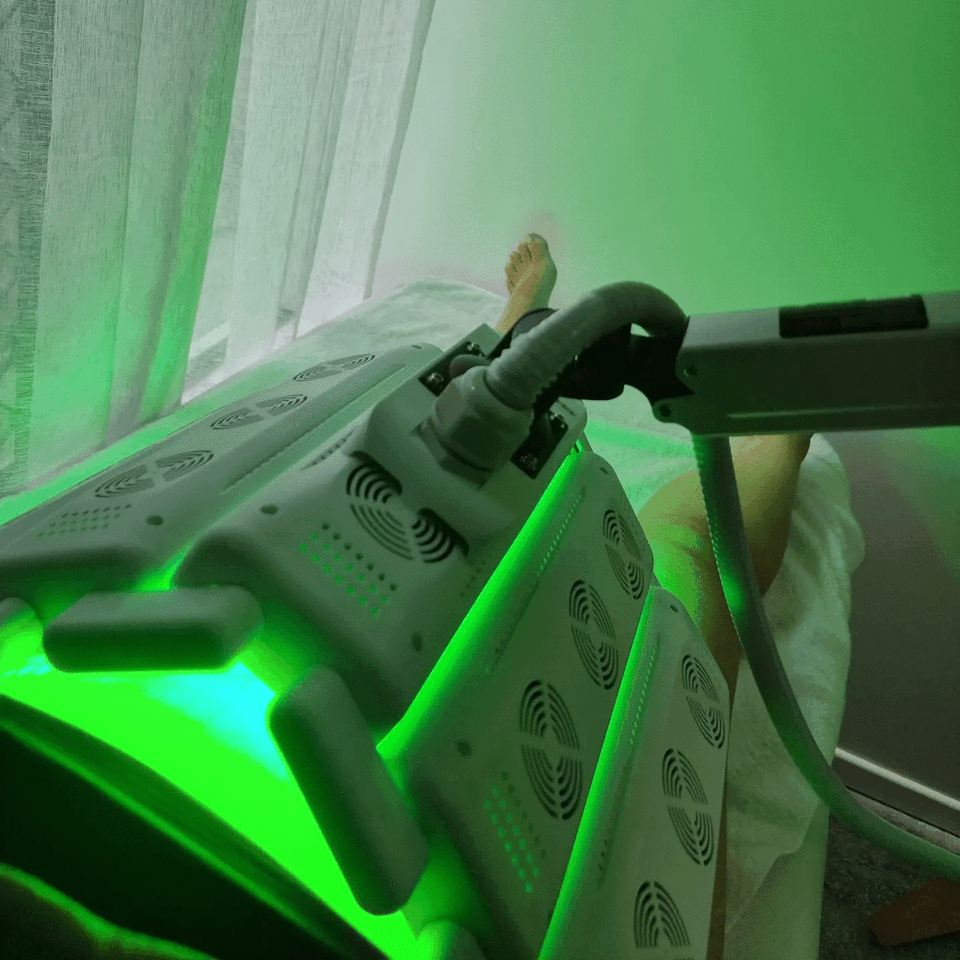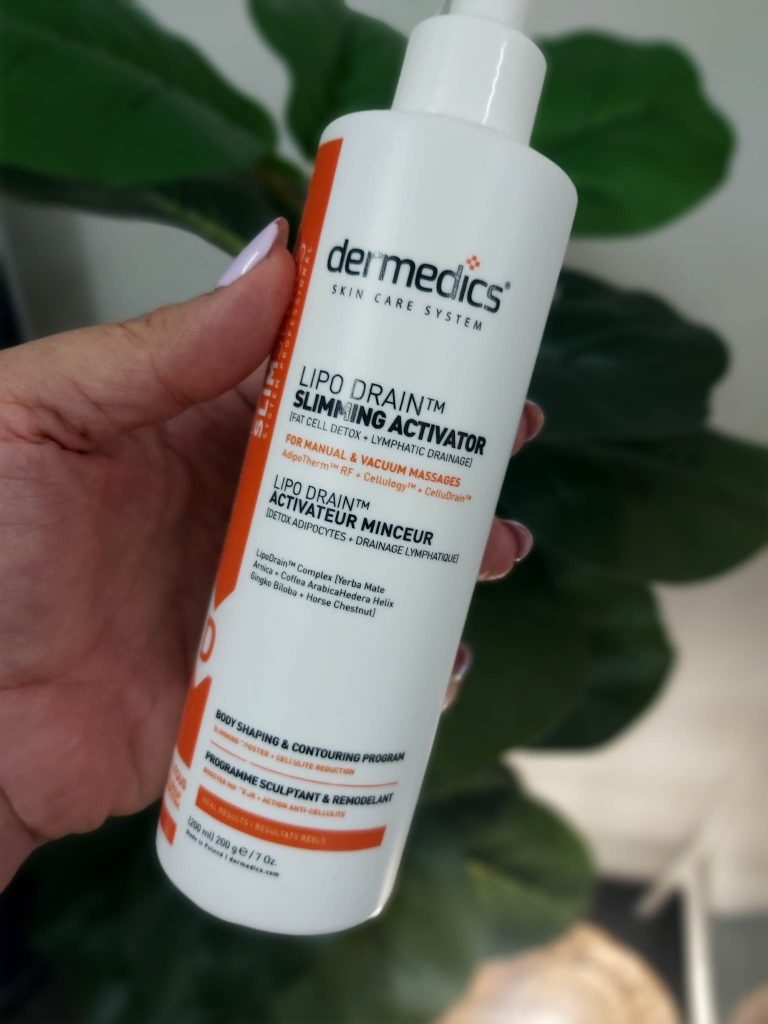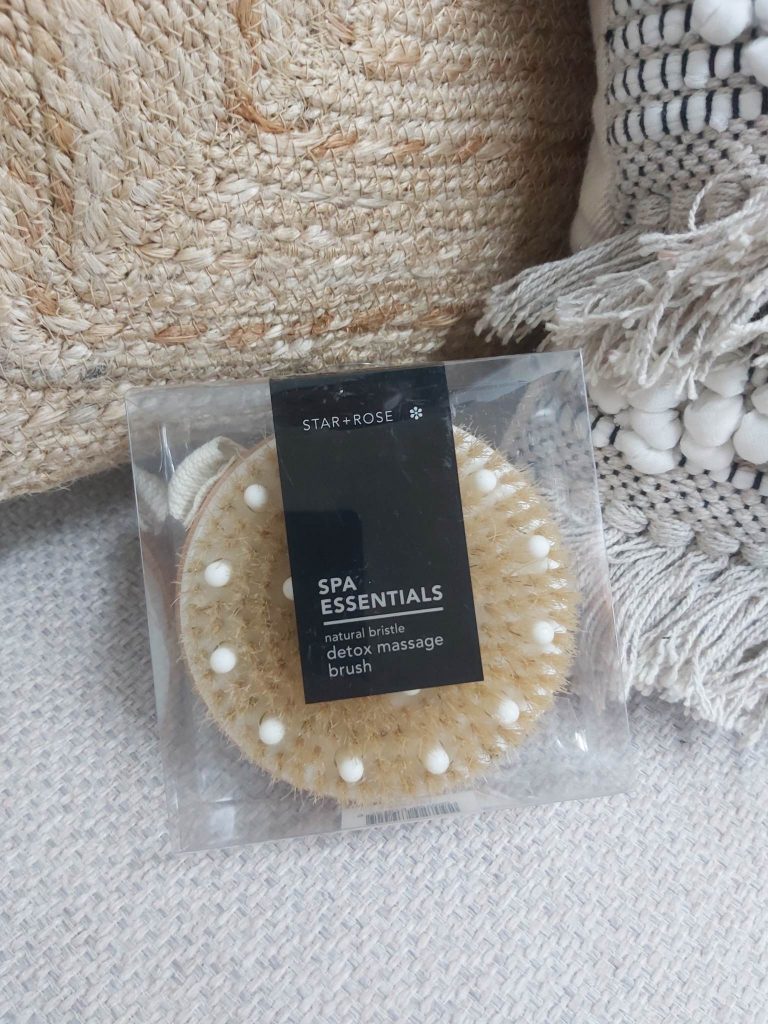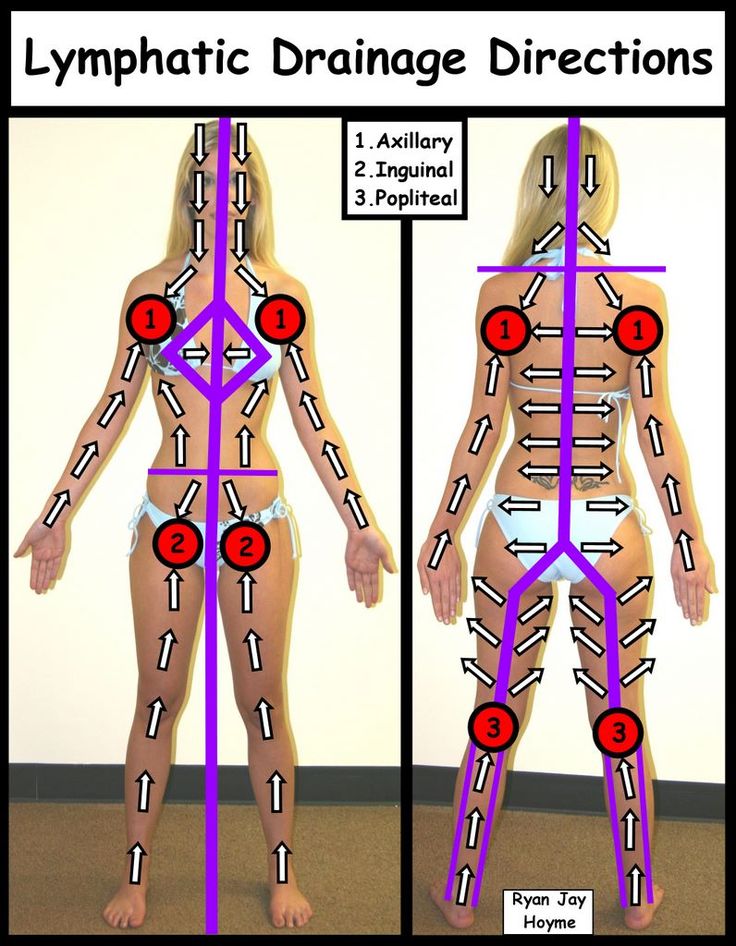The lymphatic system plays a key role in the body’s immune defenses.
Lymphatic fluid flows through lymph vessels, which connect lymph nodes. As it passes through the lymph nodes, white blood cells trap and destroy harmful particles, such as bacteria.
Like blood in the circulatory system, lymphatic fluid is always moving. If it stops, swelling can occur, as lymph fluid builds up, often in the arms or legs which is called lymphedema. When you have a CoolSculpting or RadioFrequency/ Cavitation treatments done, your lymphatic system is what helps to clear the dead fat cells and toxins out of the body. There are more benefits than just that for our bodies though. The fluid in the lymphatic system helps remove waste and toxins from body tissues.

So how do we assist the body in Lymphatic Drainage?
There are multiple ways to assist your body to manually drain excess Lymph out of the system. At home you can perform lymphatic massage (find out how to below), use a dry body brush before your daily shower (the one we retail in clinic has massage beads as well as bristles), use of products such as our LipoDrain cream (RRP $85), and LED treatments which we offer in clinic.


Lymphatic Drainage massage you can do at home
Lymphatic drainage massage, also known as manual lymphatic drainage, relieves swelling that happens when medical treatment or illness blocks your lymphatic system. Lymphatic drainage massage involves gently manipulating specific areas of your body to help lymph move to an area with working lymph vessels.
A lymphatic drainage massage is a two-step process:
- Clearing: This step releases lymphatic fluid in your tissues.
- Reabsorption: This step moves your lymphatic fluid to your lymph nodes.
1. Lymphatic breathing
Deep breathing acts like a pump that helps move fluid through the vessels and lymph nodes. Follow the steps below:
- Place both hands on the ribs.
- Take slow, deep breaths and feel the air move down to the abdomen.
- Slowly sigh the air out through the mouth.
- Rest between breaths and repeat 5 times.
2. Prepare the front of the neck
- Place the index and middle fingers of each hand on either side of the neck, just below the earlobe.
- Stretch the skin by gently sliding the fingers down toward the shoulders, then release.
- Repeat 5 times.
- Move the hands down and repeat until you have massaged the whole neck.
3. Prepare the side of the neck
- Place the palm of each hand on either side of the neck below the ears.
- Slowly move both hands down and back.
4. Prepare the back of the neck
- Place the palms of the hands on the back of the neck near the hairline.
- Gently slide the hands together down the neck toward the spine.
5. Prepare under the arms
Prepare the lymph nodes under the arms to help them accept lymph fluid from other areas of the body. Do not perform this movement on areas that doctors have treated for cancer. Follow these steps:
- Cup the palm under the armpit.
- Gently pump the palm upward and toward the body.
- Repeat on the other arm.
6. Prepare behind the knees
- Place both hands behind the knee so that the fingers point toward each other.
- Pump the back of the knee by gently pressing the hands into the back of the knee and rolling them upward.
- Repeat on the other knee.
Upper body massage techniques
Use the following techniques to help drain lymph fluid from the chest, shoulder, and upper arm.
To massage the chest:
- Place the palm flat on the opposite side of the chest, slightly above the breast.
- Move the hand up the chest and over the collarbone.
- Continue up the neck until the skin covering the chest feels tight, then release.
To massage the shoulder:
- Rest the arm on a table or armrest.
- Place the other hand on the shoulder of the resting arm.
- Move the hand over the back of the shoulder and toward the neck.
To massage the upper arm:
- Rest the arm on a table or armrest.
- Place the middle two fingers of the other hand on the inside of the upper arm below the shoulder.
- Gently slide the fingers toward the outside of the upper arm.
- Wrap the hand around the outside of the upper arm.
- Gently move the hand back toward the inside of the arm.
To massage the full arm:
- Begin at the shoulder.
- Use the palm to stretch the skin upward.
- Move the hand down to the upper arm and stretch the skin up toward the shoulder.
- Continue down the arm, always moving the skin upward.
- Stop at the wrist.
To massage the fingers:
- Start at the base of the swollen finger close to the palm.
- Use the index finger and thumb to stretch the skin on the finger toward the hand.
- Continue this motion over the entire finger.
- Remember to direct fluid toward the hand.
Lower body massage techniques
Start the massage at the top of the leg and work down toward the foot. Use a pillow or stool for support.
To massage the upper leg:
- Start at the top of the leg.
- Put one hand on the inside of the opposite thigh near the groin and place the other hand on the buttock.
- Gently stretch the skin by moving the hand on the inside of the thigh toward the outside of the thigh and up.
- Move the hands farther down the leg and repeat the stretching movement above.
- Stop above the knee.
To massage the lower leg:
- Start right below the knee.
- Place one hand on the shin and the other hand on the back of the calf.
- Gently stretch the skin upward.
- Continue this motion, working down toward the ankle and the top of the foot.
- Always use upward strokes.
To massage the toes, use the thumb and index finger and stroke the skin from the tip of each toe toward the base.
It is vital to always end the massage by drinking extra fluids.
Before performing Lymphatic Drainage Massage please consider this
- These massage movements should affect only the skin, so use gentle pressure and do not press hard enough to feel the muscles.
- Keep the hands relaxed.
- Do not massage swollen or infected areas.
- Do not massage areas of the body that have undergone treatment for cancer.
- Drink extra fluids, ideally 2–4 glasses of water, after each massage to help flush the body.
- During the massage, there should be no pain or skin reddening.
Generally speaking, lymphatic drainage massage is a safe treatment to relieve lymphedema. There are some conditions and circumstances where lymphatic drainage massage is not recommended:
- You have a heart condition.
- You have kidney failure.
- You have blood clots.
- You have an infection.
Talk to your healthcare provider if you’re concerned your physical health might be affected by lymphatic drainage massage.
